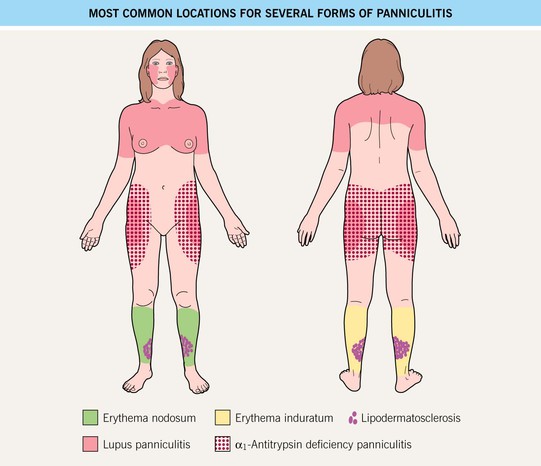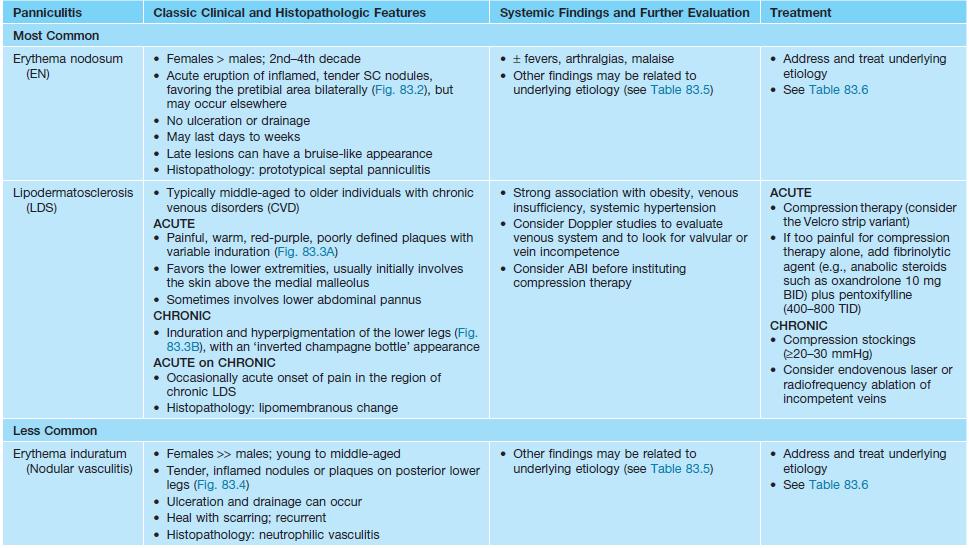83
Panniculitis
Introduction
• Panniculitis = inflammation of adipose tissue.
• There are various etiologies, and a clinical classification system is presented in Table 83.1.
Table 83.1
Clinical classification of the panniculitides.

* The majority represent an underlying subcutaneous lymphoma.
• Diagnosis is challenging and involves consideration of (1) patient characteristics such as age, immune status, underlying diseases; (2) location of the lesions (Fig. 83.1); (3) the presence or absence of ulceration and/or drainage; and (4) histopathological findings.
• Once the diagnosis of panniculitis is made, further evaluation for underlying etiology or associated conditions is necessary (Tables 83.2–83.4).












